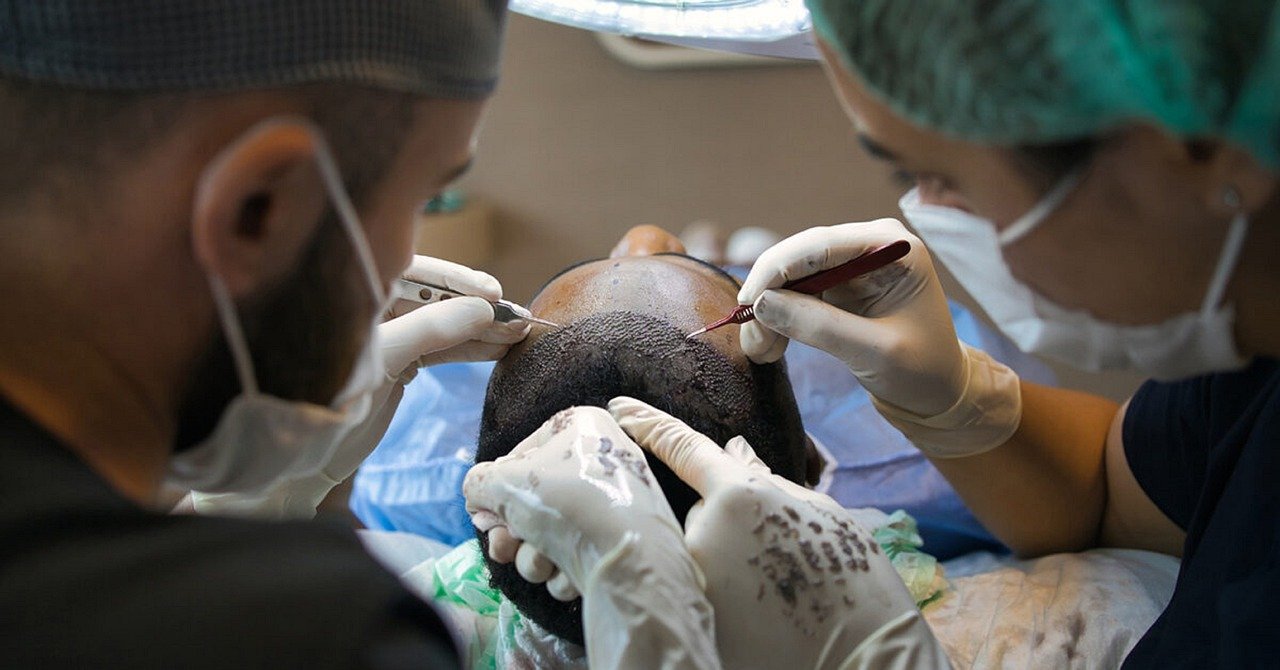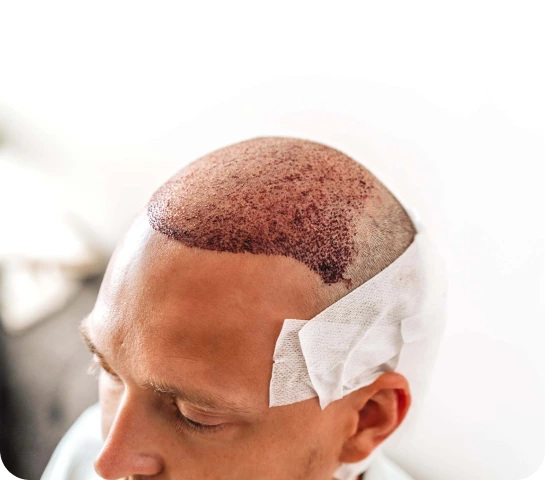Hair loss is a common problem that affects millions of people worldwide. It can have a significant impact on a person’s self-esteem and confidence. Hair transplant surgery has emerged as a popular solution for those looking to restore their hair and regain their confidence. One of the most popular hair restoration techniques is Follicular Unit Extraction (FUE) Hair Transplant.
FUE hair transplant is a minimally invasive procedure that involves extracting individual hair follicles from the donor area and transplanting them into the recipient area. This technique has gained popularity due to its natural-looking results and minimal scarring compared to other hair transplant techniques.

FUE Hair Transplant:
The Ultimate Solution for Hair Loss
Key Takeaways
- FUE hair transplant is a minimally invasive procedure that involves extracting hair follicles from the donor area and transplanting them to the recipient area.
- The procedure is performed using a specialized tool called a punch, which extracts individual hair follicles one by one.
- FUE hair transplant offers several benefits, including minimal scarring, faster recovery time, and natural-looking results.
- Patients need to prepare for the procedure by avoiding certain medications and following the surgeon’s instructions.
- The recovery process after FUE hair transplant typically involves some discomfort and swelling, but most patients can return to work within a few days.
How FUE Hair Transplant Works
FUE hair transplant works by extracting individual hair follicles from the donor area, typically the back or sides of the head, using a small punch tool. These follicles are then carefully transplanted into the recipient area, where the hair loss has occurred. The procedure is performed under local anesthesia, ensuring that the patient is comfortable throughout the process.
Compared to other hair transplant techniques such as Follicular Unit Transplantation (FUT), FUE has several advantages. FUT involves removing a strip of skin from the donor area, which can leave a linear scar. In contrast, FUE leaves tiny dot scars that are virtually undetectable. Additionally, FUE allows for a quicker recovery time and less post-operative discomfort.
Benefits of FUE Hair Transplant
One of the main benefits of FUE hair transplant is that it provides natural-looking results. The individual hair follicles are carefully extracted and transplanted, mimicking the natural growth pattern of the patient’s hair. This ensures that the transplanted hair blends seamlessly with the existing hair, creating a natural appearance.
Another advantage of FUE is that it leaves minimal scarring. The tiny dot scars left by the extraction process are virtually undetectable, even with short haircuts. This is particularly beneficial for individuals who prefer to wear their hair short or have a more active lifestyle.
FUE also offers a quick recovery time compared to other hair transplant techniques. Most patients are able to resume their normal activities within a few days after the procedure. The transplanted hair will start to grow within a few months, and full results can be seen within 9-12 months.
Furthermore, FUE hair transplant is suitable for all hair types, including curly, straight, and coarse hair. The technique allows for precise extraction and transplantation of individual follicles, ensuring that the results are tailored to the patient’s specific hair characteristics.
Preparation for FUE Hair Transplant
| Preparation for FUE Hair Transplant | Metric |
|---|---|
| Consultation | Discuss hair loss history, expectations, and medical history |
| Medications | Avoid blood thinners, herbal supplements, and smoking |
| Pre-Op Instructions | Clean scalp, avoid alcohol and caffeine, and wear comfortable clothing |
| Procedure Time | 4-8 hours depending on number of grafts |
| Post-Op Care | Avoid strenuous activity, keep scalp clean, and take prescribed medications |
| Recovery Time | 1-2 weeks for healing, 3-6 months for new hair growth |
Before undergoing an FUE hair transplant, it is important to schedule a consultation with a hair transplant specialist. During this consultation, the specialist will assess the patient’s hair loss pattern and determine if they are a suitable candidate for the procedure. They will also provide detailed pre-operative instructions to ensure that the patient is well-prepared for the surgery.
In preparation for an FUE hair transplant, patients may be advised to avoid certain medications that can increase the risk of bleeding during the procedure. These may include blood thinners, non-steroidal anti-inflammatory drugs (NSAIDs), and herbal supplements. It is important to follow these instructions carefully to minimize any potential complications during the surgery.
Procedure of FUE Hair Transplant
The FUE hair transplant procedure typically begins with the administration of local anesthesia to numb the donor and recipient areas. This ensures that the patient remains comfortable throughout the procedure. Once the anesthesia has taken effect, the surgeon will use a small punch tool to extract individual hair follicles from the donor area.
The extracted follicles are then carefully transplanted into tiny incisions made in the recipient area. The surgeon will strategically place each follicle to ensure a natural-looking result. The entire procedure can take several hours, depending on the extent of the hair loss and the number of follicles being transplanted.
Recovery Process after FUE Hair Transplant
After an FUE hair transplant, patients will be provided with post-operative instructions to ensure a smooth recovery process. It is important to follow these instructions carefully to promote proper healing and minimize any potential complications.
Patients may be advised to avoid strenuous activities and heavy lifting for the first few days after the procedure. They should also avoid touching or scratching the transplanted area to prevent dislodging the newly transplanted follicles.
The transplanted hair will initially shed within a few weeks after the procedure. This is a normal part of the healing process, and new hair growth will begin within a few months. Full results can be seen within 9-12 months, as the transplanted hair continues to grow and blend with the existing hair.

Success Rate of FUE Hair Transplant
The success rate of FUE hair transplant is generally high, with most patients experiencing satisfactory results. According to statistics, the success rate of FUE hair transplant ranges from 80-90%. However, it is important to note that individual results may vary depending on various factors.
Factors that can affect the success rate of FUE hair transplant include the patient’s age, overall health, and extent of hair loss. It is important for patients to have realistic expectations and understand that multiple sessions may be required to achieve their desired results.
Role of PlasmaMedica in FUE Hair Transplant
PlasmaMedica is a leading provider of FUE hair transplant, offering advanced technology and techniques for optimal results. Their team of experienced hair transplant specialists ensures that each patient receives personalized care and achieves natural-looking results.
PlasmaMedica utilizes state-of-the-art equipment and techniques to extract and transplant hair follicles with precision. Their team stays up-to-date with the latest advancements in hair restoration to provide the best possible outcomes for their patients.
PRP Therapy for Hair Growth
In addition to FUE hair transplant, PlasmaMedica also offers Platelet-Rich Plasma (PRP) therapy for hair growth. PRP therapy involves extracting a small amount of the patient’s blood, processing it to concentrate the platelets, and injecting it into the scalp.
PRP therapy has been shown to stimulate hair growth and improve the overall health of the hair follicles. When combined with FUE hair transplant, PRP therapy can enhance the results and promote faster healing.
How Plasma Helps in Hair Loss Treatment
Plasma, specifically Platelet-Rich Plasma (PRP), plays a crucial role in hair loss treatment. PRP contains growth factors that promote cell regeneration and stimulate hair follicles to grow. When used in FUE hair transplant, PRP can enhance the survival rate of transplanted follicles and promote faster healing.
Plasma is also used in PRP therapy for hair growth, where it is injected into the scalp to stimulate dormant hair follicles and promote new hair growth. This non-surgical treatment option is suitable for individuals who are not ready for or do not require a hair transplant.
The future of hair loss treatment looks promising with the advancements in plasma technology. Researchers are exploring new ways to utilize plasma in hair restoration, including the development of plasma-based treatments that can be used in conjunction with FUE hair transplant and PRP therapy.
FUE hair transplant is a popular and effective solution for those looking to restore their hair and regain their confidence. With its natural-looking results, minimal scarring, quick recovery time, and suitability for all hair types, FUE is a viable option for individuals experiencing hair loss.
Choosing a reputable provider like PlasmaMedica is crucial to ensure optimal results. With their advanced technology, experienced team of specialists, and the option to combine FUE hair transplant with PRP therapy, PlasmaMedica offers a comprehensive approach to hair restoration.
If you are considering hair restoration, it is worth exploring FUE hair transplant as a viable option. With its high success rate and numerous benefits, FUE can help you achieve natural-looking results and regain your confidence.
FAQs
What is FUE in hair transplant?
FUE (Follicular Unit Extraction) is a hair transplant technique that involves extracting individual hair follicles from the donor area and transplanting them to the recipient area.
How is FUE different from other hair transplant techniques?
FUE is different from other hair transplant techniques because it does not involve the removal of a strip of scalp from the donor area. Instead, individual hair follicles are extracted using a small punch tool.
Is FUE a painful procedure?
FUE is a minimally invasive procedure and is generally not painful. Local anesthesia is used to numb the donor and recipient areas, and patients may experience some discomfort during the healing process.
What is the recovery time for FUE?
The recovery time for FUE is typically shorter than other hair transplant techniques. Patients can usually return to work and normal activities within a few days, and the transplanted hair will begin to grow within a few months.
Are there any risks or complications associated with FUE?
As with any surgical procedure, there are some risks and complications associated with FUE. These may include bleeding, infection, scarring, and poor hair growth. However, these risks are generally low when the procedure is performed by a qualified and experienced surgeon.
Who is a good candidate for FUE?
FUE is a suitable hair transplant technique for most people who have sufficient donor hair. However, it may not be suitable for those with extensive hair loss or scarring in the donor area. A consultation with a qualified hair transplant surgeon can help determine if FUE is the right option for an individual.
